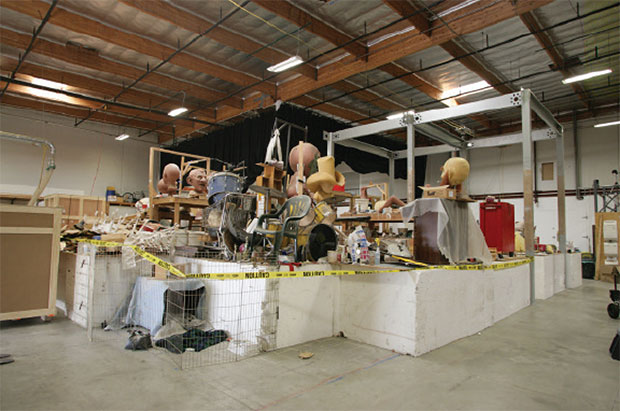
5 reasons why Paul McCarthy is not just about icky
Put off by the nudity and ketchup? Hayward Director Ralph Rugoff on what to really look for in a great artist's work
"Paul McCarthy is a master of the taboo-smash, the frontal blow that assaults our nice etiquette and systematic euphemisms. His sculptural work from the last decade features a parade of disturbing figures including mechanical tree-humpers and dirt-fuckers, giant masturbating skunks and mutants with fifty-foot-long genitalia. Sex and violence thread their way through his work like a convulsive leitmotif."
So argues Hayward Director Ralph Ruggoff in the introduction to our great new Contemporary Artist Series book Paul McCarthy. Yet that said, McCarthy's art is not really concerned with breaking taboos as a generating operating principle, say in the knee-jerk manner of an avant-gardist, dead set on affronting bourgeois morality. From early on in his career, his focus on sex and violence has been framed within an abiding thematic context: the symbolic violence of our social conditioning by the family and mass media. With that in mind we thought we'd ask Ralph to point out 5 reasons why McCarthy is not just icky.

His taboo smashing occurs in a distinctly post-Pop framework. More specifically, it is a framework closely related to childhood and developmental modelling as imagined in popular culture.
From early performances that transformed the American family's dinner - hamburgers and ketchup, hot dogs and mustard - into the raw materials for rituals of force-feeding and sexual mutilation, McCarthy has gone on to explore the authoritarian underpinnings of America's cutesy consumerism, its culture of pervasive infantilization.
Despite its trademarked motif of transgression, McCarthy's career defies easy categorization. Along with a few contemporaries such as Bruce Nauman and David Hammons, he has relentlessly pursued a far-ranging almost nomadic approach to making art. Rather than the heterogenous aesthetic of a Robert Rauschenberg, rife with logical and visual incompatibilities, McCarthy's art has embodied a principle of perverse admixture, where diverse elements are blended in a seamless collage.
4) In McCarthy s work, the human body is pre-eminently a social body, a metaphor for systems and conventions that define our world. Its control represents mechanisms of societal control; its boundaries evoke social boundaries, the distinctions and classifications of hierarchical order.
- His basic approach - and yes, this is another consistent element in his work - is a strategy of contagion. An unholy bricolage, his art provokes a cacophonous medley of responses that leads one to confront the collection of contradictions that pass, on occasion at least, for a coherent self.
For more on Paul McCarthy and more from Ralph, order our completely updated and revised monograph here. And if you'd like a Paul McCarthy print in your living space (or just a skateboard to zip around on this summer) check out his work for sale over at Artspace.